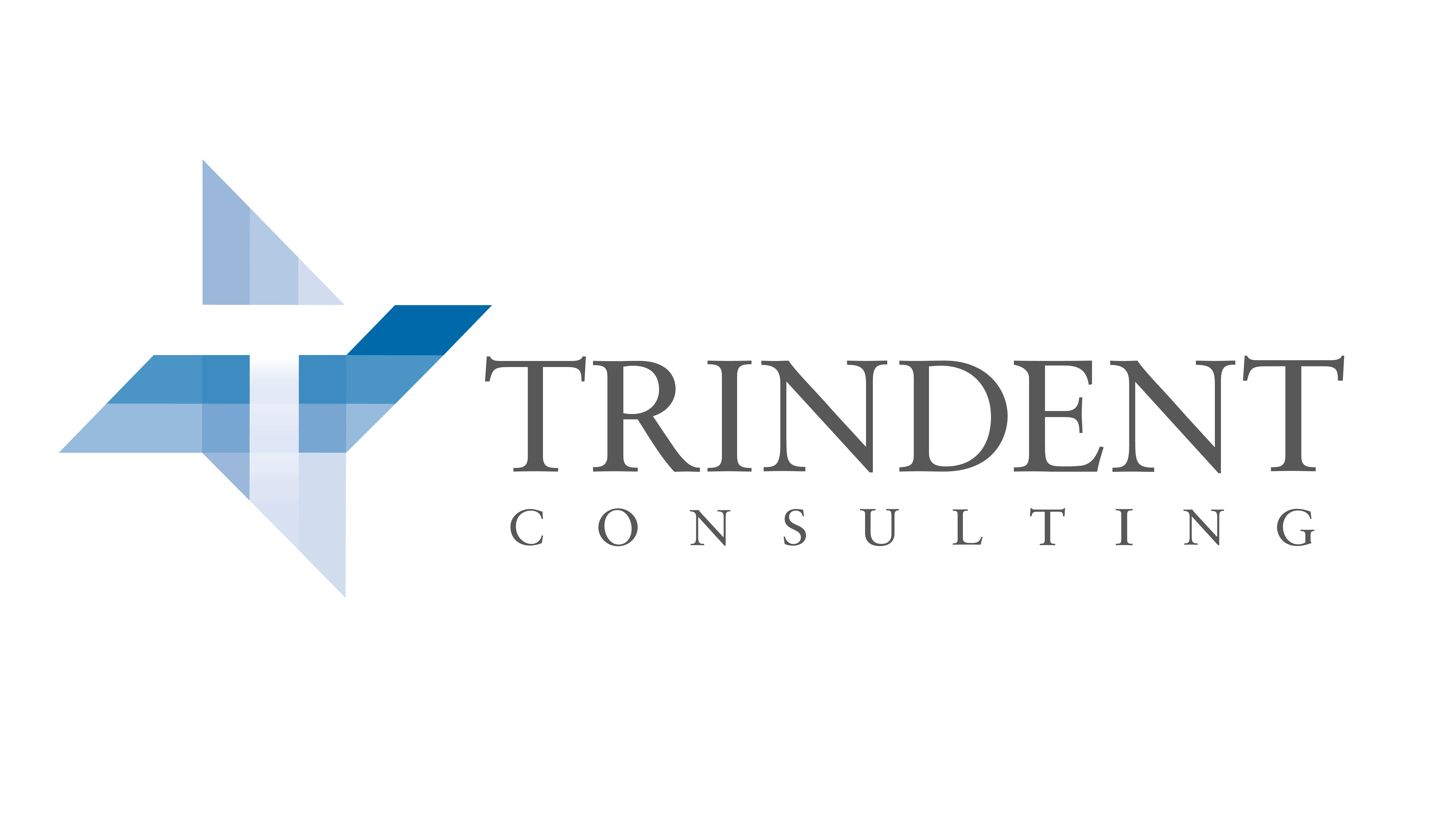Measuring Supplier Performance
It’s often hard to tell just how ‘good’ a supplier is.
Supplier Performance Overview
Most successful organizations have inward focused metrics in place to measure key variables and monitor financial results. However, many fail to look outward to suppliers who play a critical role in an organizations performance. Late deliveries, missing products, and quality issues from suppliers are just a few of many issues that can arise and have monumental effects on day to day operations of an organization and create long term turmoil with customers. Not only can customer relationships and contracts be tested or tarnished, but costly fines and penalties can be levied against organizations if suppliers fail to meet obligations.
Scenario Planning
Scenario Planning is a tool that helps an organization evaluate various project outcomes based on possible future circumstances and make the decisions most appropriate to them. Rather than predict the future, scenario planning assists the organization consider many different futures and quantify how they might impact the organization’s key drivers. Although sceptics could argue that this is a very subjective process, the fact is that most organizations do not handle uncertainty well and scenario planning is a tool to help management begin discussing, considering, and quantifying the impact that possible future events could have on their business.
Customizing the Balanced Scorecard
Translating a comprehensive set of objectives into performance indicators is difficult.
The Balanced Scorecard Overview
Originally designed by Norton and Kaplan and now utilized in one form or another by most Fortune 500 companies, the Balanced Scorecard is a powerful tool in defining what management means by “performance” and measures whether management, business units, or individuals are achieving desired results. Companies such as Exxon Mobile, Bank of Scotland, and American Express have comprised customized Balanced Scorecards to help measure the overall health and gain a better understanding of how their core activities align with their strategy. Ultimately, the Balanced Scorecard translates mission and vision statements into a comprehensive set of objectives and performance indicators that can be quantified.
Six Sigma – What’s Needed to Succeed

Six Sigma, the popular methodology for process improvement, is a statistical concept that identifies the variation inherent in any process. By subsequently working to reduce these variations once it defines them, the Six Sigma methodology diminishes the opportunity for error, thus reducing process costs or increasing customer satisfaction.
The core objective of Six Sigma is to implement a measurement-based strategy that focuses on process improvement and variation reduction. At a high level, this is accomplished through the use DMAIC, an improvement cycle (define, measure, analyze, improve, control) [Note to draft: Link to Six Sigma: Striving for the Perfect Process blog] for existing processes that lack efficiency, and the statistical representation of Six Sigma, which describes quantitatively how a process is performing.
There are, of course, many proven methodologies an organization can consider for process improvement. So, why should they use Six Sigma, and what do they need to make sure they succeed?
When to Use Six Sigma
Given the similarities between continuous improvement methodologies, it can be difficult to determine which one is right for a given situation. To help organizations make that decision, the Six Sigma Council outlines the following scenarios, and the benefits of Six Sigma can bring to solving each one.
When facing the unknown – A process is operating out of control but the problem causing the deficient output is not known.
Six Sigma looks for potential causes and using sigma level calculations prioritizes them. It then sets up the framework to resolve the causes and get to a solution.
When problems are widespread and not defined – The problems in the process are known and understood, but the scope of the solution is not defined, leading to constant scope increases and lack of viable solutions due to their unmanageable size.
With control measures in its methodology, Six Sigma stays clear of unmanageable scope escalations in favor of incremental improvements over time.
When solving complex problems – A problem with many variables causes a complex process, where it’s challenging to identify an approach, definition, and measure for a successful outcome.
Due to its statistical basis, Six Sigma can handle problems that contain large amounts of data and variables, deciphering them to give hypotheses, premises, and conclusions to base changes on.
When costs are closely tied to processes – A process that has a high cost risk due to its very small margin of error – where one incremental change can translate to millions of dollars of loss or gain – requires solution accuracy before implementation.
Six Sigma leans on its statistical process control to create assumptions, therefore when implemented properly, this method is significantly more accurate than its alternatives.
Success in Six Sigma
The Six Sigma method is not without its challenges, of course.
To be successful, Six Sigma requires support – primarily in the form of resources and data – at all levels of an organization. Adequately staffed engagement teams with necessary levels of subject matter expertise are a must for positive results, as is access to consistent and accurate data streams to enable calibration factors and the capturing of necessary KPIs – crucial to data outputs value.
But ultimately, taking advantage of how customizable this approach is to fit your industry and organizational needs will be the key to successful process improvement.
Is It the Right Choice for You?
When starting on a process improvement initiative and considering the Six Sigma methodology, it is important to have all the information first. Knowing when this method is best applied can set you on the path to operational process perfection.
The Six Sigma methodology has been adopted by top operational excellence consulting firms, including Trindent Consulting. Click here to learn more about how we can work with you to utilize this valuable tool in driving the efficiency of your organization.
Hospitals and Airports Have More in Common Than You Think
I was talking with the CEO of a hospital last week about the ongoing challenges of delivering high quality of care to an ever-increasing volume of patients, simultaneously being forced to lower costs. He told me that hospitals are now facing the same challenges that airports have been struggling with for years. You might think to yourself, what do hospitals and airports have in common? Well, here it is... there's an increased number of travelers utilizing the same number of airports, gates, and runways, with the airlines under tremendous pressure to control costs while putting safety above all else.
He then described some of the operational improvement initiatives that he wanted to focus on during the next several years. They included:
- optimizing his operating room utilization,
- reducing cancellation and no-show rates for therapy services,
- increasing productivity across all functions, and
- decreasing patient length of stay.
He drew another comparison to hospitals and airports related to support services. Hospital patients depend on timely lab test results, error-free filling of prescriptions, flawless communication between a myriad of care providers, and an efficient planning and scheduling system for treatment. To deliver an excellent travel experience, airports depend on baggage handlers, maintenance teams, airplane fuel delivery personnel, food service providers, and perfection when it comes to communication between the pilots and air traffic control.
I was reflecting on this conversation several days later and had to admit that many challenges facing hospitals and airports are indeed similar. Both need to figure out how to do more with less.
This blog was written by Sally Ryberg, Executive Vice President at Trindent Consulting. She has over 15 years of consulting experience working with large global organizations to identify and implement profit improvement strategies. In her current role, she works with executives and senior leaders to identify solutions to complex business issues. She also provides direction and leadership to the business development team.
Feeling the Burnout?

Management consulting is an excellent stepping stone for career development as it exposes consultants to multiple industries and functions, while the steep learning curve pushes them to develop transferable skills such as problem-solving, leadership, and communication. However, the industry also comes with a reputation for its long hours and a challenging work-life balance. It is typical to see consultants leave after two to four years in pursuit of a more sustainable lifestyle; hence, some individuals marvel at those who have stayed in consulting throughout their careers. But do tenured consultants need to be a rare breed? Does the stigma associated with their job mean that they do not value their personal wellbeing? While we may have different perspectives on how to prevent burnout, here are my thoughts based on personal experience and conversations with Partners and Principals at several firms:
Speak your mind
No one knows your situation better than you. Unless you speak your mind and let your team know about your constraints or wellbeing, it may be assumed that there are no issues. Perhaps you have a newborn baby, or a family member who needs additional care; clearly, what may have worked six months ago may not work now. If this is the case, voice your concerns to collaboratively set boundaries and non-negotiables with your manager. What often holds us back is the fear of consequence – but most managers that I have spoken to truly care and will make efforts to accommodate your needs given reasonable notice. Furthermore, if you are not directly involved in staffing decisions, let your manager know what interests you. Working on an engagement with a business objective that you are passionate about solving will deliver quality and a sense of achievement that can help prevent burnout.
Take a break
We often hear “I don’t have time to use up my vacation days”. To prevent such a scenario, it is helpful to plan your time off at least six months in advance. Not only does this allow appropriate resource decisions, but it can subconsciously allow you to pace and schedule work accordingly. If an extended vacation is not feasible, make an effort to take a break each day – it is also a good opportunity to learn more and develop new relationships with your coworkers.
Find someone to talk to
Whether it is your manager, development leader, or career advisor, find someone in your firm that you can speak to. Seek out connections and rich interpersonal interactions that can also help drive your professional development. It is also likely that there are others in your organization or your team that is facing similar difficulties – band together and offer mutual support to increase your sense of control and connection.
Identify stressors
Whether it is a client, colleague, deliverable, or even a family member, identify stressors and prioritize high-value activities and relationships. Set expectations and communicate what you can manage to improve productivity while managing workload. Furthermore, put yourself in your client’s shoes – what you may find important, yet stressful, may not be what is important to the client. Finally, eliminate stressors by knowing when to say no. With overwhelming demands, saying no can be the right answer and it takes courage and conviction.
The author of this blog Kevin Kim is an Engagement Manager at Trindent Consulting.
Solving Problems Quickly: There’s a Right Way

No one knows an executive who doesn’t have a packed
schedule. Executives are constantly
under time pressure, and so it’s their ability to make good decisions quickly
that makes them successful in their job.
Making quick decisions can be a double-edged sword
however. There are risks and pitfalls to
solving problems this way, but as any successful executive will tell you,
there’s a solution for that.
What Can Go Wrong
A number of factors can prevent quick decisions from being sound. Subconscious biases and heuristics can guide thinking in the wrong direction when under time constraints. When trying to solve a complex problem, insufficient information can become a stumbling block, and insufficient analysis can come into play when there is enough information available, but it’s not properly analyzed or applied.
Erroneous decisions are rarely caused by just one of these
factors. It’s usually some combination
of them that leads to errors in solving problems quickly.
Taking the Right Approach
What is the solution, then, for avoiding the dangers
of making quick decisions? There are a number
of problem-solving frameworks used the business world and while they may differ
to some extent, they all have several core elements in common:
- Define the issue.
This is often the most difficult part of
the problem-solving process, as there may not be recognition a problem exists, let
alone a clear definition of what it is. Defining the problem should include an
understanding of the desired objectives of any solution. - Measure.
This step assesses the available
information. Here, more is not always
better. The information at hand needs to
be relevant to the problem, and it needs to contain a sufficient level of detail
to allow for proper analysis. - Analyze to
identify root causes. This step analyzes the available (and
correct) information to get at the root causes of the problem. While discussing analysis tools out of scope
of this article, it’s worth mentioning that whatever analytics are used, they should
be the appropriate ones to the problem at hand. - Generate and evaluate solutions.
By this point, there should be a clear
understanding of the problem and its underlying causes. Any solutions now being considered need to
address these causes, be measurable, and have some cost-benefit analysis to
help make an informed choice between alternatives. - Implement.
If the previous steps were carefully followed,
there should be a clear plan of action now in place, including
responsibilities, targets and deadlines.
This is the point where the plan should be implemented. - Control.
This is the sustainability part
of the problem-solving process, where post-implementation KPIs are tracked against
targets, and variances are addressed.
The common characteristic of every framework, however,
is that it does not fit every situation.
This is one of the areas where Trindent Consulting can bring value to your organization. Our proven approach to identifying underlying issues and defining solutions are at the core of our passion for solving complex problems.
The Importance of An Effective Ethanol Uplift Model
By Kai Y. Wan
“How to establish a good ethanol uplift model?” is becoming an increasingly common question when it comes to gasoline blending. With the mandatory addition of 10% ethanol to a majority of gasoline products, accurate prediction of the final fuel properties is more crucial than ever. With years of experience in blending optimization projects, at Trindent we have developed specific expertise in this area, and here are some insights:
Ethanol Uplift Model Best Practices
Each
refinery has its configurations that are developed as a result of the molecules
they are making. Therefore, picking the right independent variables to start
the development of the model is critical. It starts with understanding the
principle of what Octane Number (ON) is, and how this property is related to
the chemical molecules inside the gasoline. Typically, a refinery can use as
much as 7-8 independent variables, and around 10-15 iterations before finding
the perfect model which is not only accurate but also makes chemical sense. The
complexity of the model is also important as you want to make it sophisticated
enough to provide the accuracy you want, but also simple enough to integrate
into the existing system with ease.
Managing Component Distribution
Once a
model is developed - the next question would be – how do we optimize it? In
addition to adjusting the ON of the neat blend stock (which is often the only
approach most refineries take), refineries may take advantage of smart
component distribution between different grades, and component sales and
maximize the overall benefit of ON uplift.
Going Beyond ON
While a lot of focus on the ethanol model is about ON, do not forget that other properties are affected by the addition of ethanol, too. Therefore, a mature ethanol model system would consider other key properties such as RVP, distillation, and V/L. A good ethanol model system would allow a refinery to achieve method repeatability level giveaway for all their constrained parameters, and maximize the benefit from production cost management.
The author of this blog, Kai Y. Wan is an Engagement Manager at Trindent Consulting.
Medical Equipment Inventory – A Key Part of Supply Chain Optimization

When
maintained correctly, medical equipment inventory becomes an important part of
improving equipment management in a healthcare organization, which in turn plays
a key role in enhancing the company’s bottom line.
With better equipment management comes improved access to, quality of, and use of medical devices; as well as constructive insight into the company’s financial position, giving management a foundation on which to make better business decisions.
Insights
Gained from Inventory Management
To provide an optimal operational
advantage, equipment inventory must include an accurate, up-to-date record of
all assets held by the organization, one that includes the current status of every
piece of equipment. Why is this
important? For a medical company, their equipment inventory provides the basis
for decisions on business operations.
Some of the key management
insights gained from equipment inventory include:
- A technical assessment of devices,
which provides
details of the type and quantity of equipment and its current operating status. This ascertains whether there is sufficient functioning
equipment on hand for current and upcoming demand; - Asset management facilitates the accurate scheduling and
tracking of preventive maintenance, repairs, expiries, alerts and recalls,
which minimizes equipment shortages due to malfunction or disrepair; - The value of inventory, which
allows for accurate economic and budget assessments of the company.
If equipment inventory is
inaccurate, inventory management cannot be done properly, these insights will
become incorrect, and the business decisions based on them will be negatively
affected.
Supply Chain Optimization
Accurate equipment inventory – and good inventory management – also plays a critical part in supply chain optimization, and the insights it provides in that area can lead to numerous operational improvements.
Recently, Trindent Consulting was engaged by a leading medical devices company to optimize their supply chain. Some of the biggest contributors to sustainable supply chain savings that we uncovered were linked to poor inventory management. With a focus on optimization, all aspects of the information derived from the company’s equipment inventory were examined. Our team specifically focused on inventory category parameters, turn times, product expiries, and forecast inventory needs because of their high impact on inventory management.
Once the data derived from equipment inventory was
corrected, it allowed for a streamlined supply chain inventory process to be
implemented. As a result, waste was
reduced, fill rates were improved, net field inventory levels were reduced, and
the company realized significant – and sustainable – annualized savings.
How Trindent can Make It
Happen
With deep industry knowledge, Trindent understands the specific challenges of healthcare, and works with our clients to implement and deliver sustainable results. Click here to learn how Trindent can help you optimize your medical equipment inventory, enhance your inventory management, and improve your supply chain.
Challenges between a small & a large firm. Which one should you choose?

Dear Prospective Candidate,
During its recruitment process, Trindent Consulting is often asked about the differences between working for a small and a large consulting firm. Usually, candidates are concerned they will not receive the same development opportunities, exposure, and training at a small firm as they would at a larger one.
Rest assured that working at a small firm not only offers these same experiences but at Trindent Consulting we exceed those expectations in several areas:
- Challenge – At a large firm, engagements can be multi-year and have teams that include well over ten consultants, which limits how varied your experience and exposure can be. Skillsets can stagnate and employees can find themselves pigeonholed into a niche area of expertise. At Trindent Consulting, we strive to implement six-month engagements with teams of four consultants. For an employee, this means their role is continuously evolving and their skillsets are constantly developing and expanding. Our small size also gives employees the kind of frequent exposure to internal and external executive-level staff they wouldn’t have at a large firm, as well as much more diverse exposure to different clients and industries.
- Development – Candidates are often concerned that they will not receive the same training as they would at a larger firm. However, at Trindent Consulting, we put all our consultants through a best-of-breed 12-week training program - a complete education on relevant frameworks, methodologies, and approaches, all of which are industry agnostic. Employees also receive specialist training from our in-house Subject Matter Experts (SMEs), as well as any external training identified by you or by a business need. Each employee is further given a mentor to guide them through our continuous improvement and development program. Mentors offer support, communicate feedback, and guide you through a bi-annual, self-designated Development Plan.
- Advancement Opportunities – With a small team, our accomplishments are showcased not just among the engagement team, but within the entire company. Every month, employees are recognized through our Value Excellence Award program and given the spotlight in our internal newsletter. As well, in a small firm, there is greater flexibility in promoting employees based on Key Performance Outcomes and merit – not simply their tenure.
- Communication – In a large firm, it can feel like your voice is not heard or like it's one among hundreds or thousands. Trindent believes that development does not stop with our employees. To be the best firm, we strive to hear every employee and act on their suggestions. We have weekly calls with the entire firm and monthly employee engagement surveys and meetings, and our semi-annual company retreats give every employee the opportunity to speak up, be heard, and make a difference.
If these values appeal to you and you want to challenge yourself, develop your skillset, and seek advancement opportunities, then Trindent Consulting is the right firm for you.
Visit our careers page to learn more about our values, interview process, working at Trindent, and current openings.


